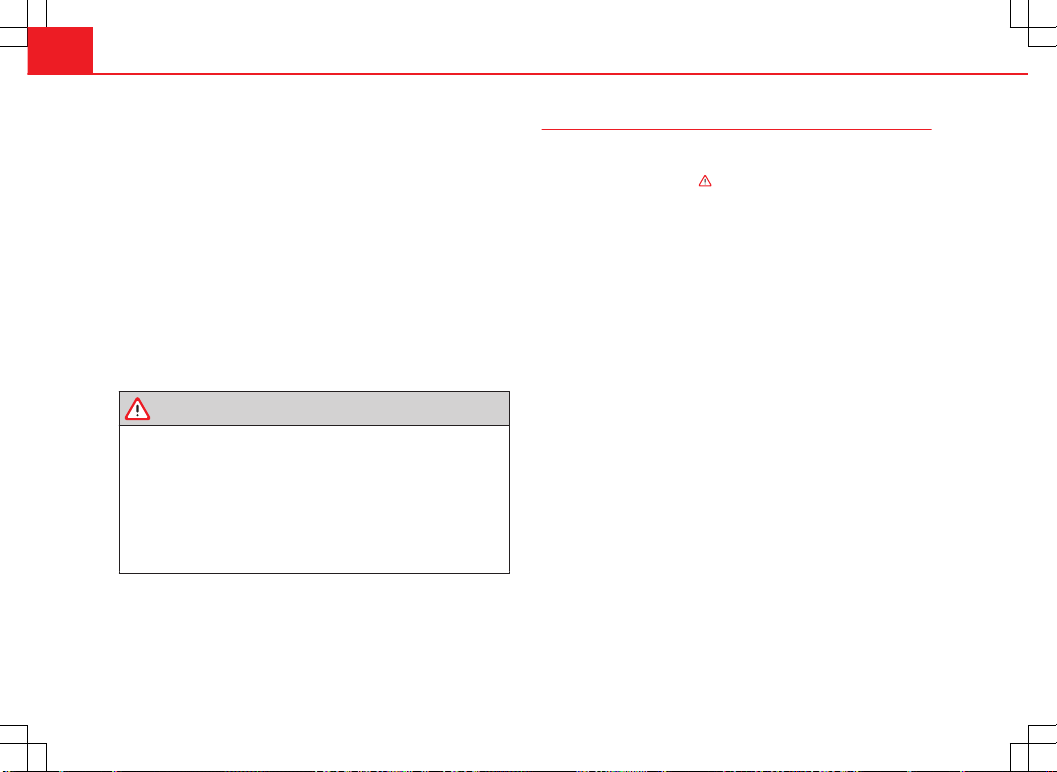Loading ...
Loading ...
Loading ...

216 Vehicle care and maintenance
The minimum tread depth required by law in the majority of cases is
1.6 mm, measured in the tread grooves next to the tread wear indicators.
Observe legal requirements in each country.
The performance of winter tyres is much reduced when the tread has worn
to 4 mm (5/32 inch).
The tread depth of new tyres may vary, according to the type and make of
tyre and the tread pattern.
Wear indicators on the tyre
The original tyres on your vehicle have 1.6 mm high ⇒ Fig. 122 tread wear
indicators running across the tread. A number of these indicators are equal-
ly spaced around the tyre tread. Certain marks on the tyre walls (for exam-
ple, the letters “TWI” or other symbols) indicate the position of the wear in-
dicators.
Tread wear indicators indicate if a tyre is worn. Tyres must always be re-
placed before the tyre tread has worn to the level of the indicator.
WARNING
Driving with worn tyres is dangerous, and may lead to loss of control of
the vehicle with serious consequences.
● Tyres must be replaced before the wear indicators are at the same lev-
el as the tread pattern.
● Worn tyres have significantly reduced grip, especially on wet surfa-
ces, increasing the risk of “aquaplaning”.
● Worn tyres make control of the vehicle more difficult in normal or dif-
ficult driving conditions, increasing the braking distance and the risk of
skidding.
Damaged tyres
Damage to wheels and tyres is often not immediately visible. If you notice
unusual vibration or the vehicle pulling to one side, this may indicate that
one of the tyres is damaged ⇒
.
● Slow down immediately if you think you have a damaged wheel.
● Check the wheels and tyres for damage.
● If tyres are worn, stop driving and seek qualified assistance.
● If there is no visible exterior damage, drive slowly and carefully to the
nearest Specialised workshop and have the vehicle checked.
Foreign bodies in the tyre
● Do not remove foreign bodies if they have penetrated through the tyre
wall!
● You should obtain professional assistance immediately.
Wear of tyres
The wear of tyres depends on a number of factors, for example:
● Driving style.
● Unbalanced wheels.
● Running gear settings.
Driving style: driving round bends fast or sudden acceleration or braking
speed up the wear of tyres. When the driving style is normal, if the tyres
wear too quickly, have the running gear settings checked at a Specialised
workshop.
Wheel run-out: The wheels on new vehicles are balanced. However, certain
circumstances may lead to imbalance (run-out), which is detected as vibra-
tions in the steering wheel. Run-out leads to wear of the steering and sus-
pension. In the event of run out, the wheels should be balanced again.
When a new wheel is fitted, it should be balanced again.
Loading ...
Loading ...
Loading ...